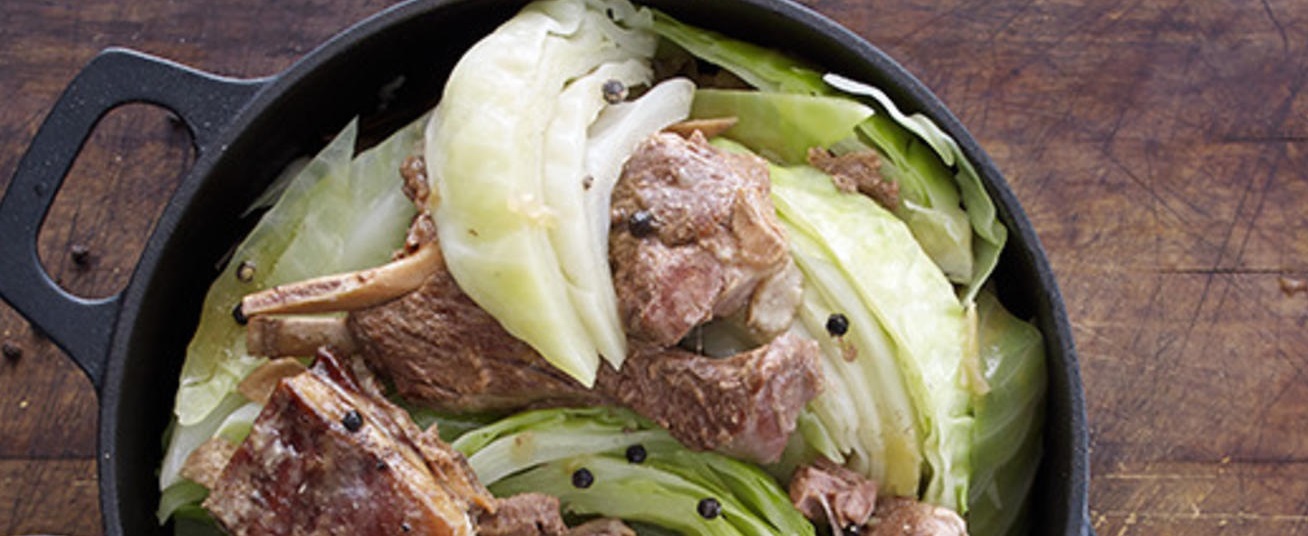Wine Pairing
Norwegian Fårikål
(Lamb and Cabbage)

In the 1970 Fårikål was elected the national dish of Norway by a popular radio program.
In 2014, agriculture minister Sylvi Listhaug hold a new competition, and Fårikål was reconfirmed as the national dish.
Pairing Suggestions
Champagne (France)
Crémant (France)
Metodo Classico (Italy)
White Wine Alternatives
Bugundy White (France)
Riesling Alsace (France)
Grüner Veltliner (Austria)
Pecorino (Italy)
Pinot Grigio (Italy)
Red Wine Alternatives
Pinot Noir (World)
Valpolicella (Italy)
Barbera (Italy)
Beaujolais (France)
Description
Combining wine with lamb and cabbage is a challenge because of the bitter and dominating vegetable flavour.
The taste picture is a blend of cabbage and lamb fat.
Red wine is not suitable because tannins do not work well against the bitter cabbage.
Our best suggestion is bubbles.
Expensive bubbles may seem too fancy for a simple dish, but any flavorful Champagne, Cremant, or Metodo Classico wine is pefect for this blend of flavors.
The longer the wine rests on the lees, the more umami is added to the taste. Umami complements the rich food.
If you choose champagne, you will taste both the food and the wine.
In addition, sparkling wine adds fresh bubbles that cleans the mouth and sharpens the appetite.
White wine is also a thing to try.
A rich white Southern Burgundy with good freshness is a good choice. This type of fresh wine (not much oaked) cleans up and sits long your mouth.
Good acidity, good balance and a long finish is typical for many fresh and fruity Rieslings from Alsace. Give them a try.
A Grüner Veltliner from Austria has flavor concentration and fine aromas of apple and herbs that complement the lamb cabbage.
If you must drink red, go for fruity flavors without oak and vanilla. Preferably a wine based on the Gamay grape or the Pinot Noir grape.
NB. Wine is relatively new in Norway, so the traditional Viking drink is Beer and Aquavit.
History
Lamb and cabbage (Fårikål in Norwegian), is a typical autumn dish which plays an important role in the Norwegian Cultural Heritage.
Norwegian lamb is considered one of the best in the world because the animals graze freely in the unpolluted landscape and the wind from the Norwegian Sea deposits salt and minerals in the grass.
The shoulder, neck, ribs and chops are combined in layers with big chunks of cabbage, whole, black peppercorn, water and salt into a casserole and slow cooked for hours so that the meat becomes tender and blands with the cabbage taste.
Personal touch: A little flour between each layer results in a thicker sauce.
Fårikål was considered the everyday food of the poors in times when it was important to utilize all edible parts of the slaughter.
Since the harvesting of the cabbage coincides with the slaughter season for lamb it is easy to understand how this recipe was born.
When the sheeps were slaughtered in the autumn, the head was the first part to be eaten, saving the finer parts for Christmas.
During the Viking Age sheep were important for their wool, used to make clothes and sails. And as vital source of proteins.